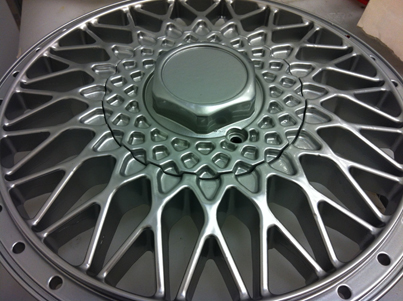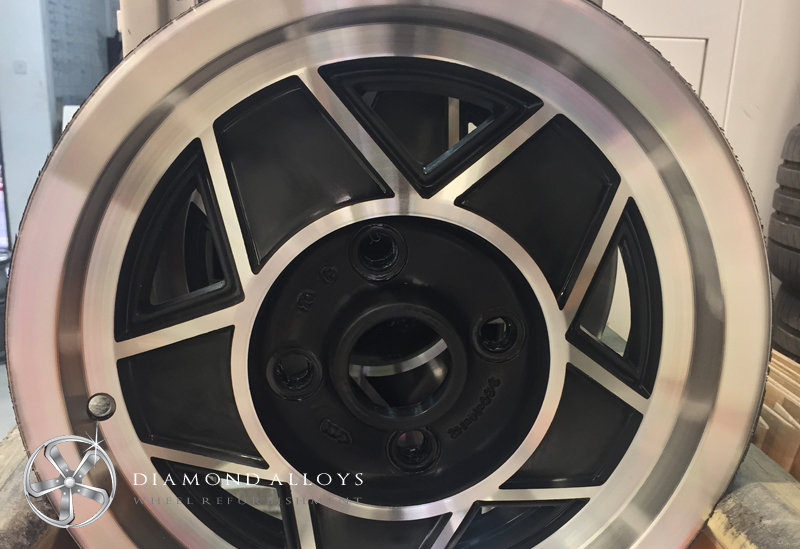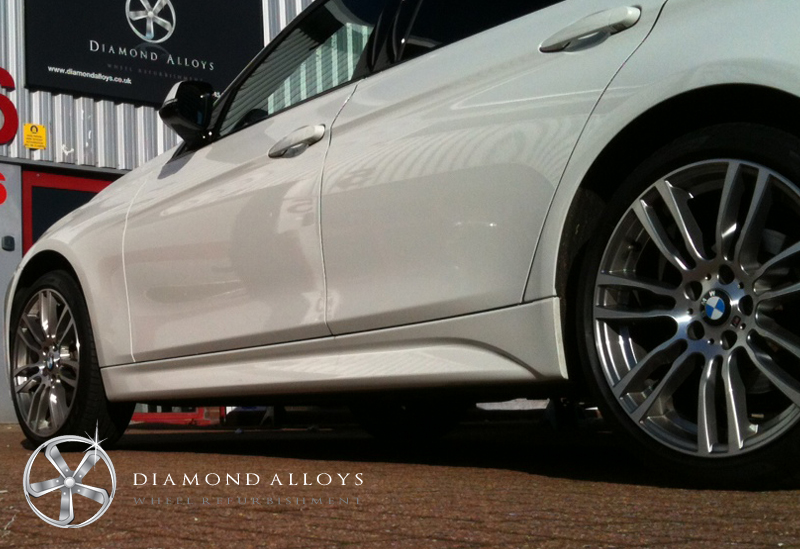Nowadays we take the availability of alloy wheels for granted, but they have in fact only been popular, and widely available, since the 1980s. So where did they come from?
 Alloy wheels have been offered sporadically since 1924. Before this, wheels were usually comprised of two pieces of pressed steel – the rim and the disc – which were welded together. The other option was an aluminium rim, which was connected to the centre by metal spokes.
Alloy wheels have been offered sporadically since 1924. Before this, wheels were usually comprised of two pieces of pressed steel – the rim and the disc – which were welded together. The other option was an aluminium rim, which was connected to the centre by metal spokes.
One of the first to realise that alloy wheels have the power to offer greater stiffness and reduced weight was Ettore Bugatti, who featured them on his Type 35 in 1924. The wheels also improved brake cooling, and Bugatti continued to develop cast alloy wheels until he arrived at the stunning 24 inch version used on the Type 41 Royale.
After the Second World War, the alloy designs were augmented by Panhard, which developed a radially finned aluminium brake drum to double as the wheel centre. Cadillac and Pontiac later introduced similar versions, which also had a centre cap covering the mounting lugs. Many vehicles had an adapted plate that allowed for the open-centre rims to work with wheel balancing machines.
 The 60s saw more makes offering alloys, although they still weren’t hugely popular. Abarth put magnesium wheels on most of their models from 1962, while Ferrari introduced their first alloy, the magnesium Cromodora Starburst, on their 275 GTB in 1964. The Corvette, the Alfa Romeo GTA, the 1965 Mustang, the 1965 Lamborghini Miura and the 1966 Fiat Dino also featured alloy wheels. Porsche came to the party slightly later, adding their first alloy to the Porsche 911S in 1966. They were consistent, however, and the alloy has remained standard on the 911 for decades. Aston Martin came to the party with an alloy on the DBS V8 in 1969, with Mercedes following a year later.
The 60s saw more makes offering alloys, although they still weren’t hugely popular. Abarth put magnesium wheels on most of their models from 1962, while Ferrari introduced their first alloy, the magnesium Cromodora Starburst, on their 275 GTB in 1964. The Corvette, the Alfa Romeo GTA, the 1965 Mustang, the 1965 Lamborghini Miura and the 1966 Fiat Dino also featured alloy wheels. Porsche came to the party slightly later, adding their first alloy to the Porsche 911S in 1966. They were consistent, however, and the alloy has remained standard on the 911 for decades. Aston Martin came to the party with an alloy on the DBS V8 in 1969, with Mercedes following a year later.
A variety of different wheels were favoured by different manufacturers, but it’s estimated that the Minilight wheel, introduced in 1964, was the most popular aftermarket wheel ever. Available in both magnesium and aluminium, the wheels were used by factory competition teams everywhere. The first budget-friendly wheel available to all motorists was an aluminium alloy offered on the VW Golf, Scirroco, Passat and Audi in 1974.
Alloy wheels finally reached peak popularity in the 1980s, and have remained that way ever since. Although their styling and design has evolved over the years, the benefits remain: better stiffness, lighter weight and unique styling that puts your own individual stamp on your car.
 At Diamond Alloys, we believe it is important to showcase our work. Not only because we are proud of what we do but also because it shows our valued clients how much care and attention our dedicated alloy wheel repair technicians put into each and every job.
At Diamond Alloys, we believe it is important to showcase our work. Not only because we are proud of what we do but also because it shows our valued clients how much care and attention our dedicated alloy wheel repair technicians put into each and every job.




















 Follow
Follow
